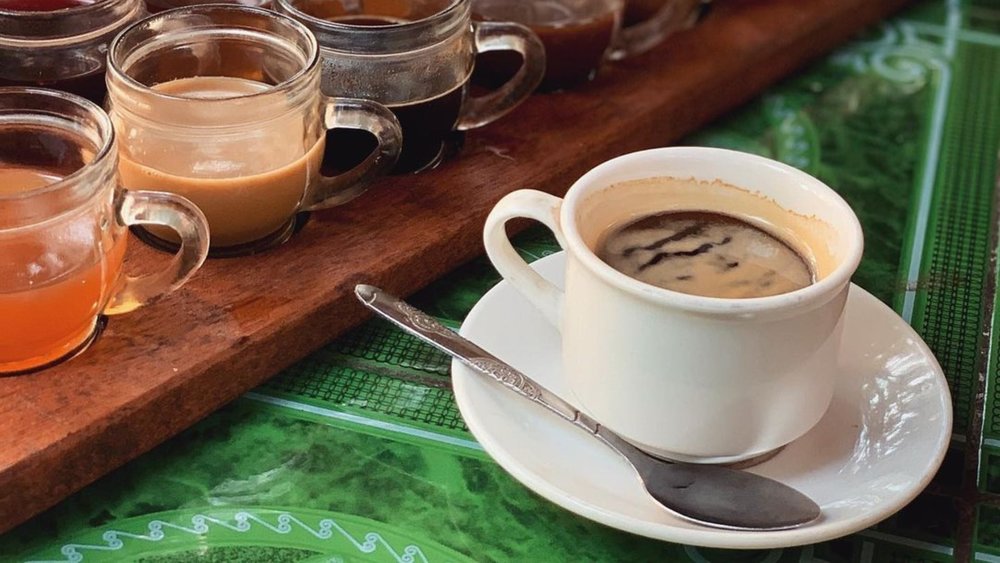Food in Bali: A Culinary Journey Through Island Flavors
Bali is not just a paradise of stunning beaches and lush landscapes; it’s also a culinary haven that offers a rich tapestry of flavors and dishes deeply rooted in the island’s culture and traditions. Balinese cuisine is a feast for the senses, blending sweet, savory, spicy, and sour flavors that create a unique and unforgettable dining experience.
Traditional Balinese Dishes
- Nasi Goreng: This iconic Indonesian fried rice dish is a staple on the island. Nasi Goreng is typically made with leftover rice stir-fried with a mix of vegetables, meat, or seafood, seasoned with sweet soy sauce, garlic, shallots, and chili. It’s often topped with a fried egg and served with prawn crackers and pickled vegetables.
- Babi Guling: Known as the Balinese suckling pig, Babi Guling is a must-try for meat lovers. The pig is marinated in a blend of turmeric, lemongrass, garlic, and a variety of local spices, then roasted over an open fire until the skin is crispy and the meat is tender and juicy. This dish is often served during special occasions and ceremonies but can be found in restaurants specializing in traditional Balinese fare.
- Bebek Betutu: A Balinese favorite, Bebek Betutu is a slow-cooked duck wrapped in banana leaves, marinated with a blend of spices like turmeric, ginger, galangal, and chili. The duck is then baked or steamed, resulting in tender meat that falls off the bone and is rich in flavor.
- Sate Lilit: A unique take on the classic Indonesian satay, Sate Lilit is made from minced meat (usually fish, chicken, or pork) mixed with grated coconut, coconut milk, lime leaves, and spices. The mixture is wrapped around bamboo sticks and grilled over charcoal, creating a smoky, aromatic treat.
- Lawar: This traditional dish combines minced meat, grated coconut, vegetables, and a medley of spices. Lawar is often served as a side dish and comes in various types, including Lawar Ayam (chicken) and Lawar Kacang (green beans), each with its own distinct flavor profile.
Local Ingredients and Spices
Balinese cuisine heavily relies on fresh, locally sourced ingredients. Rice, the staple food of the island, is grown in Bali’s famous terraced fields and is a key component of many dishes. Coconut is also widely used, providing coconut milk, oil, and grated flesh for cooking. Spices like turmeric, ginger, galangal, chili, and lemongrass are essential in Balinese cooking, imparting the vibrant flavors that define the island’s cuisine.
Must-Visit Restaurants in Bali
- Locavore (Ubud): A modern restaurant that offers a farm-to-table dining experience, Locavore is celebrated for its innovative approach to Indonesian cuisine. The chefs use locally sourced ingredients to create a seasonal menu that highlights the rich diversity of Balinese flavors. Reservations are highly recommended.
- Warung Babi Guling Ibu Oka (Ubud): A legendary spot for Babi Guling, this restaurant has been serving one of Bali’s most famous dishes for decades. The pork here is succulent and well-seasoned, offering an authentic taste of traditional Balinese cooking.
- Made’s Warung (Seminyak): A beloved eatery that has been serving traditional Balinese and Indonesian dishes since 1969. Made’s Warung offers a cozy atmosphere and a wide variety of local dishes, making it a perfect place to sample different flavors of the island.
- Merah Putih (Seminyak): For a more upscale dining experience, Merah Putih offers a contemporary take on Indonesian cuisine. The restaurant’s stunning architecture and elegant ambiance complement a menu that blends traditional recipes with modern cooking techniques.
- Nasi Ayam Kedewatan Ibu Mangku (Ubud): A popular spot for Nasi Ayam (chicken rice), this warung serves a deliciously spicy and flavorful chicken dish that is a favorite among locals and tourists alike. The simple, homey setting adds to the authentic Balinese dining experience.
Street Food Delights
No culinary exploration of Bali would be complete without trying its street food. From roadside stalls to bustling night markets, street food vendors offer a plethora of options. Try Bakso (meatball soup), Nasi Jinggo (small packets of rice with various toppings), or Martabak (savory or sweet stuffed pancakes). The flavors are bold, the prices are affordable, and the experience is authentic.
A Fusion of Cultures
Balinese cuisine also reflects the island’s diverse cultural influences, incorporating elements from Chinese, Indian, and Middle Eastern cuisines. This fusion has led to a unique culinary landscape where traditional dishes coexist with modern interpretations, providing endless options for food enthusiasts.
Conclusion
Bali’s culinary scene is as vibrant and diverse as its culture and landscapes. Whether you’re indulging in a traditional feast at a local warung or enjoying a gourmet meal at a top-tier restaurant, the island promises a dining experience that is both exciting and deeply satisfying. So, make sure to explore Bali’s rich culinary offerings on your next visit—you won’t be disappointed!
Popular Drinks in Bali and the Alcohol Culture
Bali offers a range of refreshing beverages that complement its vibrant food scene. From traditional drinks to popular cocktails, there’s something for everyone to enjoy.
- Es Campur: This colorful dessert drink is perfect for Bali’s hot climate. It’s a mix of shaved ice, sweet syrups, jellies, fruits, and sometimes condensed milk. It’s a popular choice among locals and tourists looking for a refreshing treat.
- Kopi Luwak: Known as one of the most expensive coffees in the world, Kopi Luwak is made from coffee beans that have been eaten and then excreted by the civet cat. The beans are collected, cleaned, and roasted, creating a unique and smooth coffee flavor that’s a must-try for coffee enthusiasts.
- Arak: This traditional Balinese spirit is made from distilled rice or palm sap. It is often used in cocktails or consumed straight. Arak is a strong alcoholic beverage, and it’s important to drink it responsibly, as its production isn’t always regulated.
- Bintang Beer: The most popular beer in Bali, Bintang is a light and refreshing lager that is perfect for enjoying on a sunny beach day. It’s widely available in most restaurants and bars across the island.
Restricted Alcohol Culture
While Bali has a vibrant nightlife and a range of alcoholic beverages available, it’s important to note that Indonesia is predominantly a Muslim country with certain alcohol restrictions. In Bali, these restrictions are less stringent due to the island’s majority Hindu population and its tourist-friendly atmosphere. However, travelers should be aware that the sale and consumption of alcohol are regulated. For example, some areas and establishments may have limited alcohol offerings or adhere to specific licensing regulations.
In some cases, the sale of alcohol may be restricted to specific hours or locations, particularly in smaller, local shops. It is also worth noting that imported alcohol can be quite expensive due to high taxes, so many visitors opt for local spirits like Arak or popular Indonesian beers.
When in Bali, it’s always a good idea to enjoy alcohol responsibly and respect local customs and regulations regarding its consumption.


















